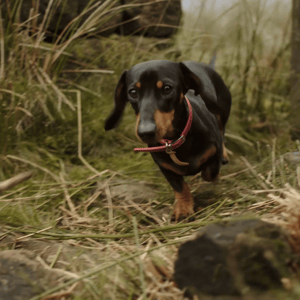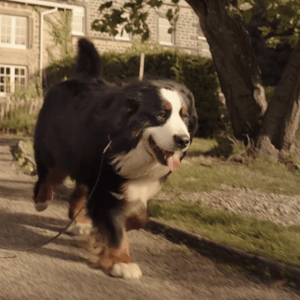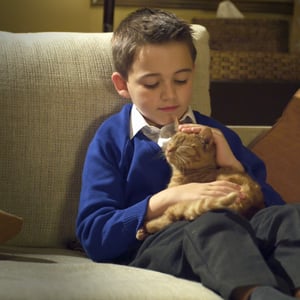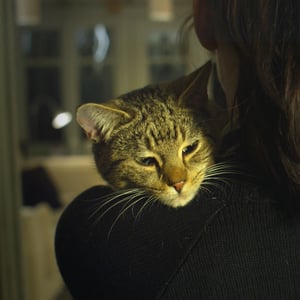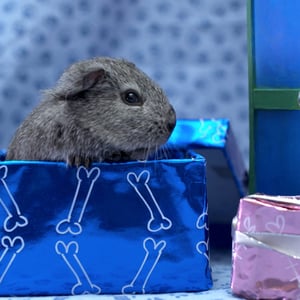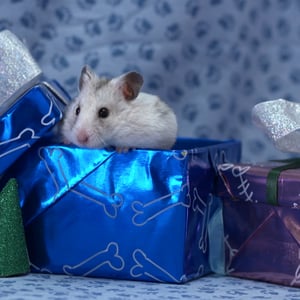Our production manager Lindsay Cowan has worked with her fair share of animals on film. Here she shares her experiences -
Those furry, fun loving, care free animals, we as a nation have embraced wholeheartedly! Britain sure does love our pets and I am no exception. I FRIKKIN' LOVE dogs and cats, but mostly dogs. They bring joy to our lives and become part of the family but what about on set.....?
"Never work with children or animals" is the expression we've all heard surely and I've filmed with more animals than I can count, dogs, cats, horses, cows, chickens and most recently we (not I personally mind) filmed with GOATS!! You would think that we would be put off filming with animals by now but with our experience behind us I'm here to convince you how to do it right. That's right, your typically grumpy production manager is pro filming with animals, HELL YEAH! They too can have the best time on set and I'm here to explain the cons and how to get around them to make them pros! Sound far-fetched? (pun intended and not the last) well, read on.
Ok, they are downright unpredictable, fur-real when at home I'm sure they perform beautifully for that tid bit of juicy chicken dangling enticingly from their owners fingers but put them in an environment with lights, camera and 40 people staring at them and it can be downright daunting; wouldn't you get stage fright?
The first rule to avoid coming away disappointed ... don't over schedule.
Some animals really need the time to adjust to set before shooting. I can't tell you the amount of time on set waiting for an animal to perform. Give them time! Dogs especially are excitable creatures and it takes them time to get used to the environment and begin to relax. Only when they are relaxed will they focus and perform for you.
Cats are another story, they scarper when they feel vulnerable and this is just about the most vulnerable environment you can put them in. I hark back to our time shooting a cat for a pet food commercial. All the cat had to do was eat the food. Don't get me wrong, the food was exactly what the cat ate at home so we knew it liked it but put in front of a camera and all it did was to turn it's nose up at it.
So how did we get the shot? We stopped shooting and let the cat wander around the studio, dismissing the crew for an early lunch. The only people in studio were the handlers, cat and our camera man (the shot was static and we were rigged ready). Once it didn't feel vulnerable man did that cat go at that food!!!!! PERFECTAMUNDO! annnnnnnnnnddddddddd ACTION! Done in one take!
2nd Rule: Doing more takes doesn't mean you will perfect the shot.
The best takes with animals tend to be the first 3 if it's a repetitive action. Once they're bored, you can try and try but it will become less and less likely so really plan your moves well and don't overwork your furry friend.
Next rule: Listen to the handlers.
They know their animals, they take the time to look for the perfect animal for you and those on their books have been selected for a number of reasons. They know their animal and they know how to get the best out of them. Dismiss their advice at your peril! They'll often do this from the very beginning, breeds have certain traits. Tabby cats for example like to explore, show cats will sit still for you - you fe-line me?! A good handler will advise you on the best breeds for your shot. So what's more important to you? An animal that can do the very trick you want or the look of the animal, so think carefully!
This leads me onto my next rule...
Bring your handlers on as early as possible!
If you really have to have that calm sleepy boxer in your shot (oxymoron if ever I heard one) then cast as early as possible. It may surprise you but it's not like picking furniture. "I like what that dog does but can I have it in a different colour" yes... but it might not have the same capabilities. Different dogs have different skill levels so your trainer will begin getting the owners to rehearse the tricks with them weeks before to enable them to perform better on set for you especially if the action goes against the very instinct or nature of the breed. Cast them the day before and it's often pot luck. If you want the look and the action together early casting is crucial to success. We can never guarantee but as a production manager I'm here to foresee these problems and advice on how best to avoid it so think on!
Beautifully leading on to my last rule. There are no guarantees.
With the best will in the world these are animals and once again as I'm here to reduce your risks I suggest back up options; every damn time. Need 10 animals? Don't put 10 in your budget unless you know you can still create your content with only 5 of them, go higher. What if they don't perform? Can you still tell your story with just 5? If the answer is no then you need a back up plan. If Bruiser the Chihuahua won't shred the newspaper then perhaps Derek the Boston Terrier will! (It's part of the aforementioned breed characteristics if you will). Can you be flexible? I would advise it and plan for this eventuality. If you need a cow, my advice is have the herd on standby in case the notoriously nervous Daisy makes a bid for freedom. Aim for best and plan for worst is the very motto of any good production manager.
So DO work with animals, I'll leave the children up to you!! Here's some key advice from our trusted animal handler Davinia on the do's and don'ts.
Having animals on set is a lot of fun, for the crew, the talent and the animal themselves. However, there are some important guidelines to remember when working with any animal for a media production.
-
First and foremost, animal welfare has to be top priority. There should always be an independent animal welfare monitor on set to ensure the health and safety of the pet at all times - including ‘green room’ time as well as when the animal is actually working. Animal welfare should be provided by a qualified person such as a Vet, Vet nurse or animal trainer/behaviourist.
-
Risk assessment prior and during shoot to identify any hazards, obstacles or environmental conditions that could cause injury or harm to the animal/s or their handlers
-
Cast and crew should not pet, feed or play with the animal/s off camera without consent of the owner, handler and/or welfare monitor
-
Extreme care must be taken to ensure the pets cannot escape the set or location. All escape routes and exits must be blocked off and secured
-
Clean water, adequate shade, shelter and warmth must be available at all times
-
A separate space for the animal to rest when not on set is also ideal, as well as a safe place for them to ‘toilet’
-
When not on set, dogs should be kept on a lead, cats in a carrier and other animals in an appropriate cage, crate or pen; ideally from their own home
-
Animals should not be left unattended or with anyone unqualified for their well-being
Want to work with us? Check out Harringtons and Webbox for some of our ads with our furry friends and let us 'lead' the way....sorry couldn't resist one last pun!
Click here to see all our animal centric commercials...


